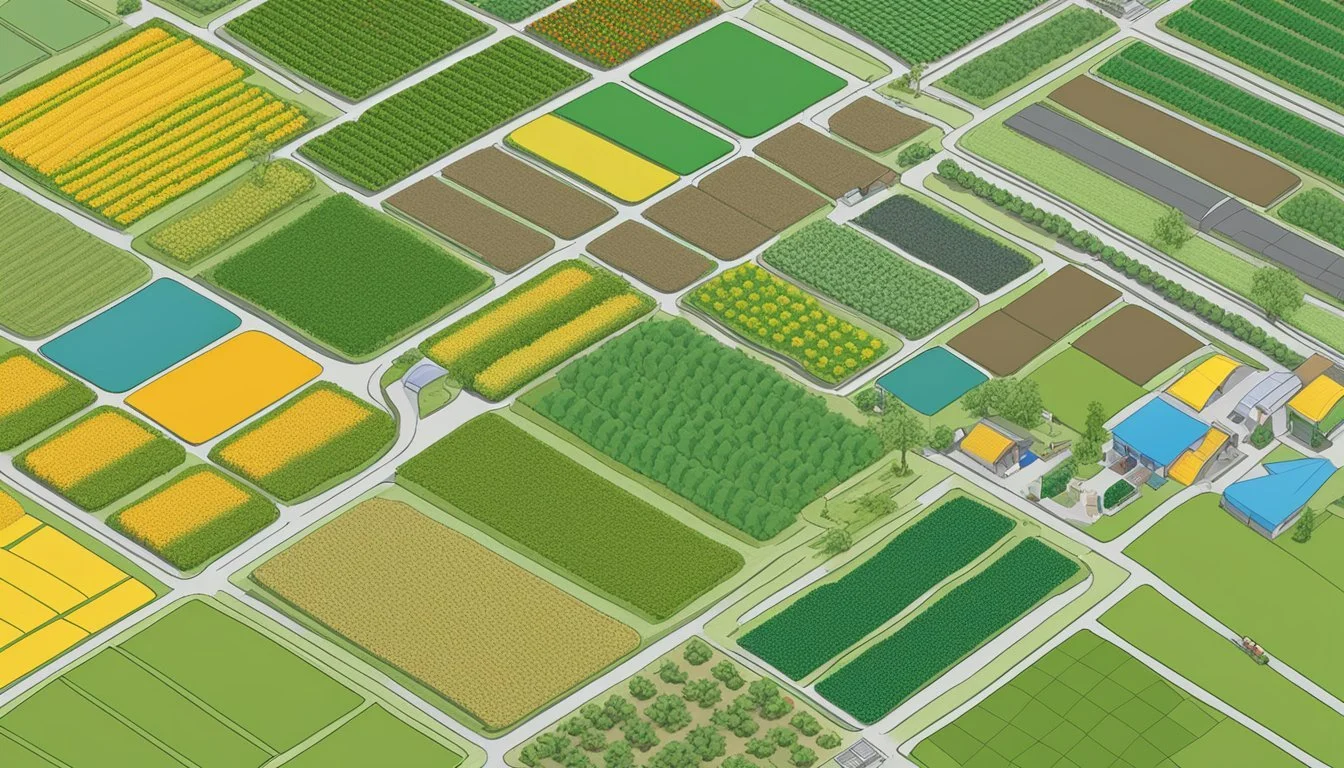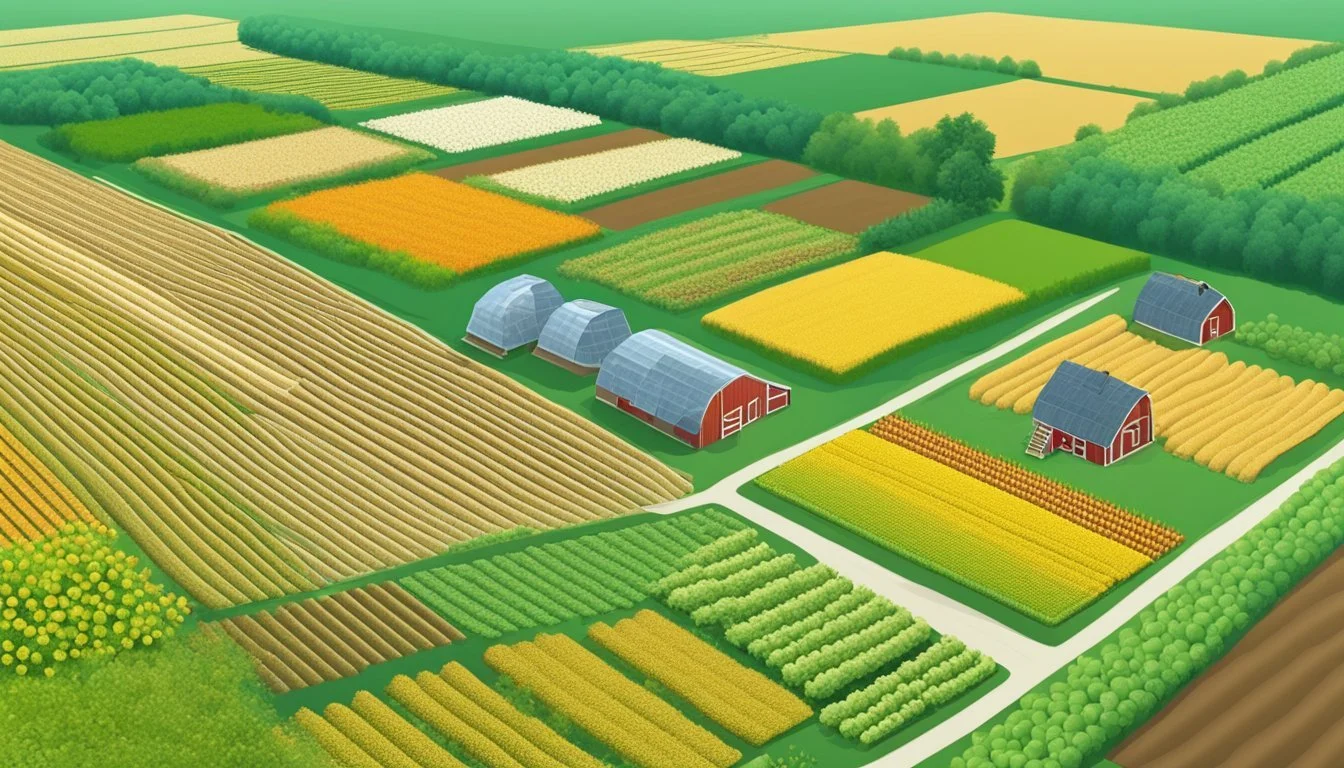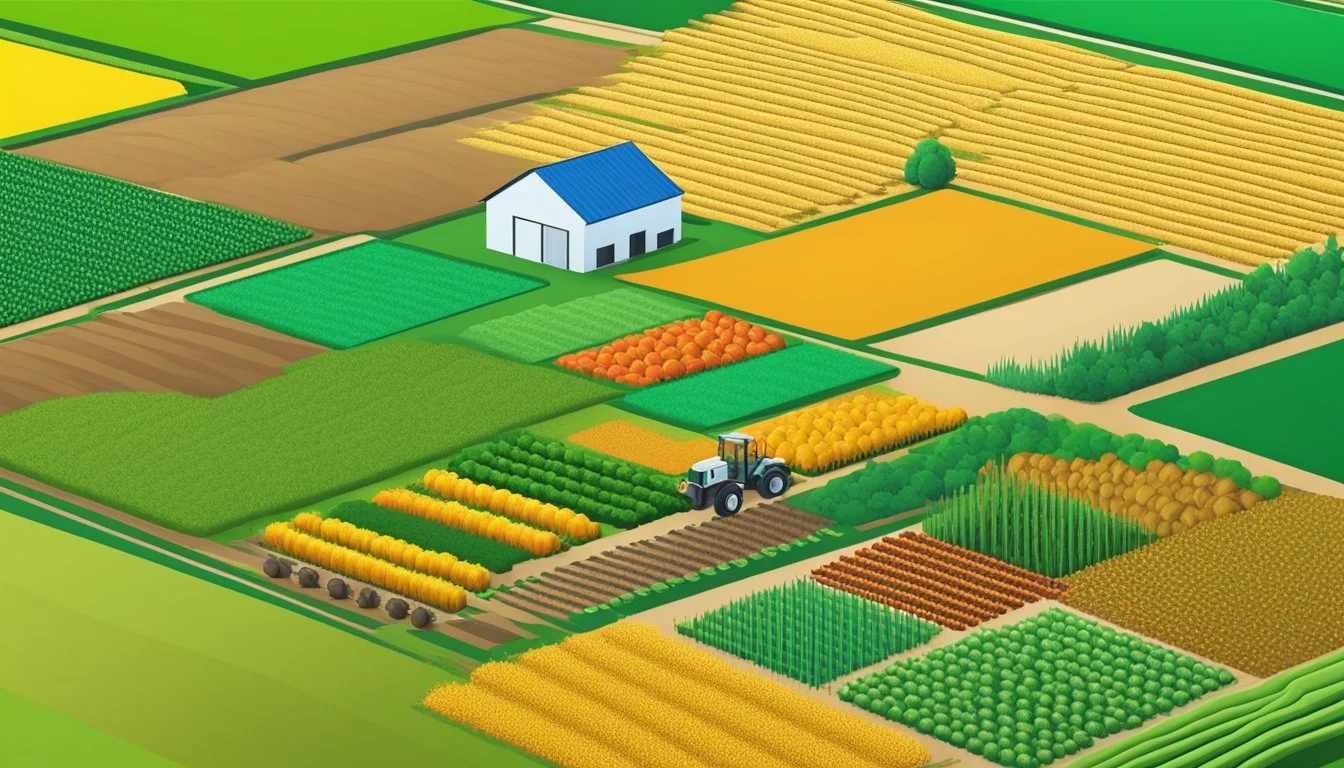Maximize Yield and Efficiency with Crop Planning Software
Strategies for Smarter Farming
Crop planning software is transforming the agricultural industry by enabling farmers to optimize their yields and increase their operational efficiency. With the ability to plan, monitor, and manage the production process from a centralized platform, this innovative technology ensures that farm operations are streamlined and decision-making is data-driven. These tools assist in selecting crop varieties, scheduling planting, and determining the necessary quantities of inputs such as seeds and fertilizers, based on real-time data and market demand.
Farmers can leverage these software solutions to establish clear growth objectives and meticulous planting schedules, ensuring that every inch of farmable land is utilized effectively. By forecasting yields and analyzing performance data, the software guides farmers in adjusting their strategies to maximize production. With features like tracking cultivation cycles, processing, and maintenance tasks, crop planning software also aids in improving the long-term sustainability of farming practices.
The strategic insight provided by these systems allows growers to make informed decisions that are crucial for enhancing the profitability of their farms. They can tailor their farming operations according to evolving market trends, resource availability, and environmental conditions. This adaptability is key to sustaining high yields year after year and places an emphasis on precision farming, where resources are allocated according to the specific needs of each crop.
Fundamentals of Crop Planning Software
Crop planning software is a critical tool for maximizing agricultural yield and efficiency. This software aids in streamlining the cultivation process from seeding to harvest.
Understanding Crop Planning Software
Crop planning software is an agricultural tool designed to assist farmers and agronomists in strategizing and managing their crop production. Its data-driven approach allows for meticulous tracking of crop cycles, field conditions, and resource allocation, which is central to improving crop yields and farm productivity.
Advantages of Using Crop Planning
Increased Efficiency: The use of crop planning software can lead to greater operational efficiency by automating scheduling and the tracking of cultivation stages.
Data Management: Centralizes all crop-related data, making it readily accessible for informed decision-making.
Risk Mitigation: Helps farmers anticipate and mitigate risks with scenario planning and predictive analytics.
Core Components of Crop Planning Systems
Scheduling Tools: Manage planting and harvest timelines with precision, ensuring optimal growing periods and labor allocation.
Resource Management: Track inputs such as seeds, fertilizers, and water, optimizing the use with real-time data.
Reporting Capabilities: Generate detailed reports on crop performance to guide future farm practices and investments.
Integration Abilities: Compatibility with other farm management software, including livestock management software, enhances overall functionality.
Maximizing Crop Yields
Maximizing crop yields is essential for farmers seeking to improve profitability and efficiency. Crop Planning Software aids in this pursuit by offering tools for effective crop rotation, monitoring plant health, and utilizing predictive analytics for yield forecasting.
Crop Rotation and Planting Schedules
Crop Rotation:
Farmers can enhance soil health and yield potential through strategic crop rotation. Crop Planning Software helps in determining the optimal rotation sequence and timing to break pest and disease cycles, while maintaining soil fertility.
Planting Schedules:
Timing: Software can calculate the best planting times based on historical climate data and current weather forecasts.
Variety: It selects suitable crop varieties for different seasons and soil types.
Monitoring Crop Health and Growth
Real-Time Monitoring:
With Crop Planning Software, farmers can track crop health in real-time, ensuring swift action can be taken to address any issues.
Plant Growth Metrics:
Growth Rate: Track daily growth rates against expected thresholds.
Water and Nutrient Levels: Monitor and adjust for optimal plant development.
Data Collection:
Sensors and drones collect detailed data on plant health, allowing farmers to make informed decisions on irrigation, fertilization, and pest control.
Predictive Analytics for Yield Forecasting
Data Analytics:
Software utilizes historical yield data, real-time weather information, and satellite imagery to predict yields with high accuracy. This helps farmers plan for the harvest and market demands.
Forecasting Techniques:
Statistical Models: Use patterns from historical data to forecast future yields.
Machine Learning Algorithms: Analyze complex datasets to predict outcomes with greater precision.
By leveraging these advanced tools and techniques, farmers can make strategic decisions that directly contribute to increased crop yields and sustainable farming practices.
Enhancing Farm Efficiency with Technology
The integration of advanced technologies in farm operations has become essential for optimizing resource efficiency and boosting crop yields. Precise irrigation, equipment automation, and real-time data analysis are pivotal for modern agricultural practices.
Irrigation and Water Management Systems
Irrigation systems have seen a tremendous transformation with the implementation of technology. Today's systems are equipped with sensors that monitor soil moisture and climate conditions, facilitating efficient water use. They can adjust the water delivery automatically, delivering the right amount of water at the right time to maintain optimal soil moisture levels, which is critical for crop health and yield.
Use of smart sensors for soil moisture and climate conditions.
Automated irrigation systems that adjust water levels based on real-time data.
Automation and Equipment Maintenance
Automation is revolutionizing farm efficiency, especially in the realm of equipment maintenance. Tractors and other machinery are now outfitted with sensors that can predict when maintenance is needed, preventing costly downtime. Automated tractors can also sow seeds and apply fertilizers with precision, reducing waste and ensuring that resources are used optimally.
Predictive maintenance based on sensor data.
Automated tractors for precise sowing and fertilization.
Real-Time Data and Connectivity
Connectivity on the farm enables the constant flow of real-time insights, which are critical for making informed decisions. Equipment with built-in connectivity provides data on their operation and the field’s conditions. Farmers can access this information on a variety of devices, allowing them to make adjustments on-the-go to improve efficiency and yield.
Equipment with built-in connectivity for operation and field data.
Accurate, real-time insights accessible on multiple devices for informed decision-making.
Overcoming Agricultural Challenges
Effective management of agricultural challenges requires innovative strategies and tools. It is crucial to navigate environmental, biological, and operational hurdles with precision to ensure the sustainability and productivity of farming practices.
Adapting to Environmental Conditions and Climate
Modern crop planning software allows farmers to analyze and adapt to varying environmental conditions. With climate-smart agriculture (CSA) approaches, it utilizes seasonal weather data, historical climate patterns, and long-term forecasts to optimize planting schedules. This data-driven farming ensures crops are grown in suitable conditions, reducing resource waste and maximizing yield.
Weather prediction integration for real-time adjustments
Soil health monitoring for sustainable practice decisions
Disease and Pest Control Strategies
Disease and pest infestations can severely impact crop yield. Crop planning software provides detailed pest management plans tailored to specific crops and local pest populations. Farmers can effectively implement targeted treatments to control outbreaks, based on evidence-based strategies.
Pest/Disease
Aphids
Fungal Rot
Detection Method
Sensor Monitoring (Aphids)
Spectral Imaging (Fungal Rot)
Control Strategy
Biological Controls (Aphids)
Timely Fungicide Application (Fungal Rot)
Managing Farm Operations Amidst Uncertainty
Uncertainty in agriculture, from market fluctuations to unexpected weather events, demands a flexible approach to farm management. Crop planning platforms equip farmers with the insights to make informed decisions quickly. Analytical tools help in forecasting demand, managing resources, and organizing labor more efficiently, leading to an agile and resilient operation.
Real-time market analysis for crop choice optimization
Resource allocation models for improved efficiency
By utilizing crop planning software, farmers can overcome the multifaceted challenges presented in today's agricultural landscape, securing food supply while adhering to environmental stewardship.
Profitability and Resource Management
To maximize agricultural yield and efficiency, crop planning software plays a crucial role in streamlining profitability and managing resources effectively. Key components such as precise inventory control and production planning, profit maximization through waste reduction, and the adoption of sustainable and precision farming practices are all pivotal in achieving these goals.
Inventory and Production Planning
Effective inventory and production planning is essential for ensuring that resources are used optimally. Crop planning software aids in the monitoring of supply levels, allowing for accurate scheduling of purchases and application of inputs. Technologies track nutrient levels in the soil and enable farmers to apply the correct amount when needed, minimizing excess and cost.
Supply Level Monitoring: Periodical assessment of inventory status.
Nutrient Management: Tailored application schedules to prevent overuse.
Profit Maximization and Waste Reduction
The goal of profit maximization is inextricably tied to waste reduction. Crop planning software helps in the identification of inefficiencies and guides decisions on crop selection and resource allocation, potentially increasing profits. Reduction of waste in resources such as water and fertilizer not only saves costs but also enhances environmental sustainability.
Inefficiency Identification: Pinpointing processes that can be optimized for better output.
Resource Allocation: Strategic distribution of inputs to improve yield.
Sustainable and Precision Farming Practices
Sustainable farming practices ensure the longevity and health of agricultural operations. Crop planning software supports precision farming techniques that optimize the delivery of water, nutrients, and pesticides, applying them only where and when necessary. This precision conserves resources and supports a healthier ecosystem.
Water Conservation: Tailored irrigation systems to reduce water usage.
Pesticide Control: Localized application to minimize chemical usage.
By integrating these strategies through crop planning software, farms can realize a future where agriculture is both economically beneficial and environmentally responsible.
Integrating with Modern Agricultural Practices
Crop planning software stands at the forefront of modern agricultural innovation, meshing seamlessly with cutting-edge farming techniques to optimize yields and bolster farm efficiency. This integration is pivotal in redefining agricultural productivity and environmental stewardship.
Advancing with Remote Sensing and Satellite Imagery
Remote sensing and satellite imagery constitute the pillars of precision agriculture. These technologies allow for real-time monitoring of crop conditions, detecting variations in soil moisture, and assessing plant health from a macro perspective. By utilizing multispectral images, farmers can discern the vigor of their crops, pinpointing areas that require attention and intervening promptly to maintain crop health.
Leveraging Data for Farming Methods and Cultivation
Data-driven farming methods revolutionize not only how crops are cultivated but also how decisions are made on the farm. Crop planning software leverages extensive datasets, encompassing everything from soil data to historical yield information. This empowers farmers with actionable insights:
Historical weather patterns
Optimized planting schedules
Tailored nutrient management plans
Such granular control over cultivation practices ensures that resources are allocated efficiently, significantly reducing waste while maximizing the potential of every acre.
The Role of Analytics in Soil and Crop Health
Analytics serve as a conduit for translating complex soil and crop data into coherent and actionable strategies. These systems scrutinize factors like soil pH, nutrient composition, and water content, which are crucial for maintaining soil health and ensuring optimal crop growth. By processing this information, crop planning software aids in the implementation of precise irrigation and fertilization techniques, measurably improving yield and reducing the environmental impact of farming operations.
Scaling Up with Crop Planning Software
As farms grow in size and complexity, scaling up becomes critically dependent on integrated solutions for crop management. Crop planning software embodies a suite of tools vital for expanding agricultural operations efficiently, enabling farmers to meet high production and management standards.
Collaboration and Task Management Features
Modern crop planning software offers robust collaboration tools that allow farm managers and workers to synchronously update and access farming data. These tools facilitate a centralized dashboard from which they can assign tasks, track progress, and manage resources in real-time. For instance, one software solution may integrate with mobile devices to alert field workers of their daily tasks or changes in schedules, enhancing on-ground task management and operational agility.
Assessing Software Solutions for Agriculture
Selecting the right crop planning software is a pivotal decision that requires farmers to evaluate several key features:
User interface: A clear and intuitive UI ensures all team members can navigate the software effectively.
Customization: The software should provide the flexibility to tailor features to the specific needs of the farm.
Scalability: It is crucial that the software can handle an increasing amount of work or its potential to be enlarged to accommodate that growth.
Support and training: Adequate customer support and training resources are important for a smooth transition to new software.
Heuristics can be used to help farmers assess which software solutions align best with their farm operations and long-term goals.
Long-Term Benefits and Industry Impact
Implementing the right crop planning software yields long-term benefits by driving efficiency and maximizing yields. Farms can anticipate an increase in production accuracy, which often translates into higher sales and profit margins. Such advancements also encourage the adoption of more sustainable farming methods, positioning the agricultural industry at the forefront of innovation and responsible resource management. Moreover, the ability to capitalize on comprehensive data analysis and reporting tools gives farmers a significant advantage in making informed decisions that impact the farming landscape substantially.
Adoption and Future of Agricultural Software
The dynamic landscape of agricultural technology is increasingly being reshaped by software that maximizes yield and efficiency. This shift involves not just the adoption of new tools but also the transformative impact these tools have on farm management systems and agricultural productivity.
Importance of Connectivity and Adoption
Connectivity has emerged as the backbone of modern agricultural operations. Software platforms like FarmLogs and Granular harness the power of real-time data transfer to enable farmers to make informed decisions to increase productivity. The integration of cloud services allows these systems to efficiently store and process vast amounts of data from various sources. Successful adoption of these platforms often hinges on reliable internet connectivity, which is integral to deploying automated systems across expansive agricultural lands.
Forecasting the Evolution of Farm Management Systems
As farm management systems evolve, there's a noticeable trend towards more sophisticated software solutions. Conservis and CropTracker are examples of advancements that facilitate comprehensive farm management activities through robust data analysis and reporting features. One can anticipate that future systems will lean heavily on automation and machine learning algorithms to predict and respond to farming conditions, thereby streamlining operations and enhancing the precision of crop cultivation techniques.
Impact on the Agricultural Land and Food Supply
The incorporation of agricultural software not only optimizes land use but also plays a crucial role in sustaining the global food supply. Automated systems facilitate efficient land management, reducing wastage and overshoot in the use of resources like water and fertilizers. The adoption of these technologies aids in preserving the quality of agricultural land while meeting the growing food demand. The future of these software platforms is closely tied to their ability to scale and integrate with emerging technologies, ensuring food security and the sustainability of resources.
Conclusion
Advancements in agricultural technology have led to the development of crop planning software, a tool crucial for the modern farmer seeking to enhance productivity sustainably. Through the integration of such software, farmers benefit from precision in managing planting schedules and resource allocation, resulting in optimized yields.
Crop Planning: It has been established that careful crop planning is essential for meeting the global food demand. Software such as Navfarm aids farmers by providing detailed planning capabilities that align with their productivity goals while adhering to sustainable practices.
Productivity: The utilization of agritech for precision farming is shown to significantly boost productivity. Key interventions facilitated by technology ensure that resources are not squandered, thereby enhancing the efficiency of agricultural inputs like fertilizers, water, and pesticides.
Sustainable Agriculture: By employing strategic crop management and reducing resource waste, sustainable agriculture becomes a tangible outcome. Organic manure treatments, for example, have been observed to yield results on par with conventional NPK treatments, maintaining soil health and reducing chemical reliance.
In conclusion, the agricultural sector's future is being reshaped by crop planning software, embodying an approach that is both high-yield and environmentally conscious. Embracing this technology positions farmers to effectively address the pressing challenges of food production and resource management in an ever-changing world.





